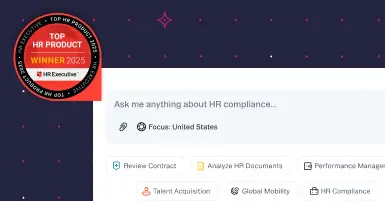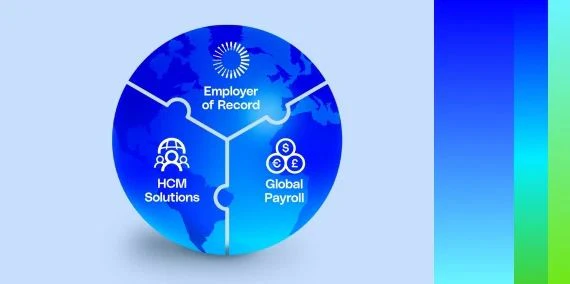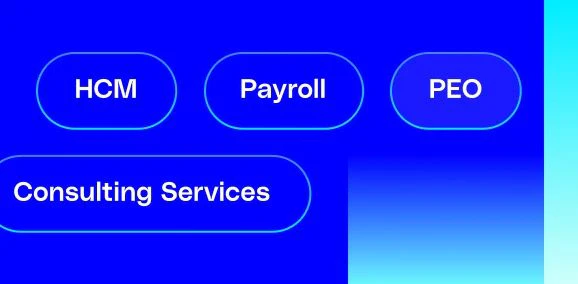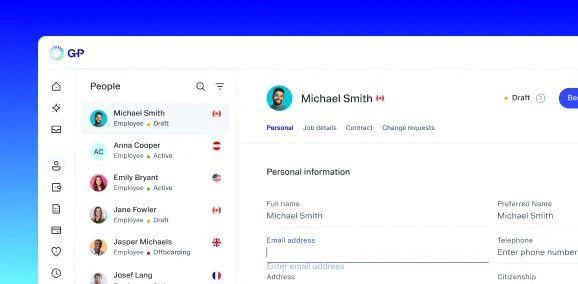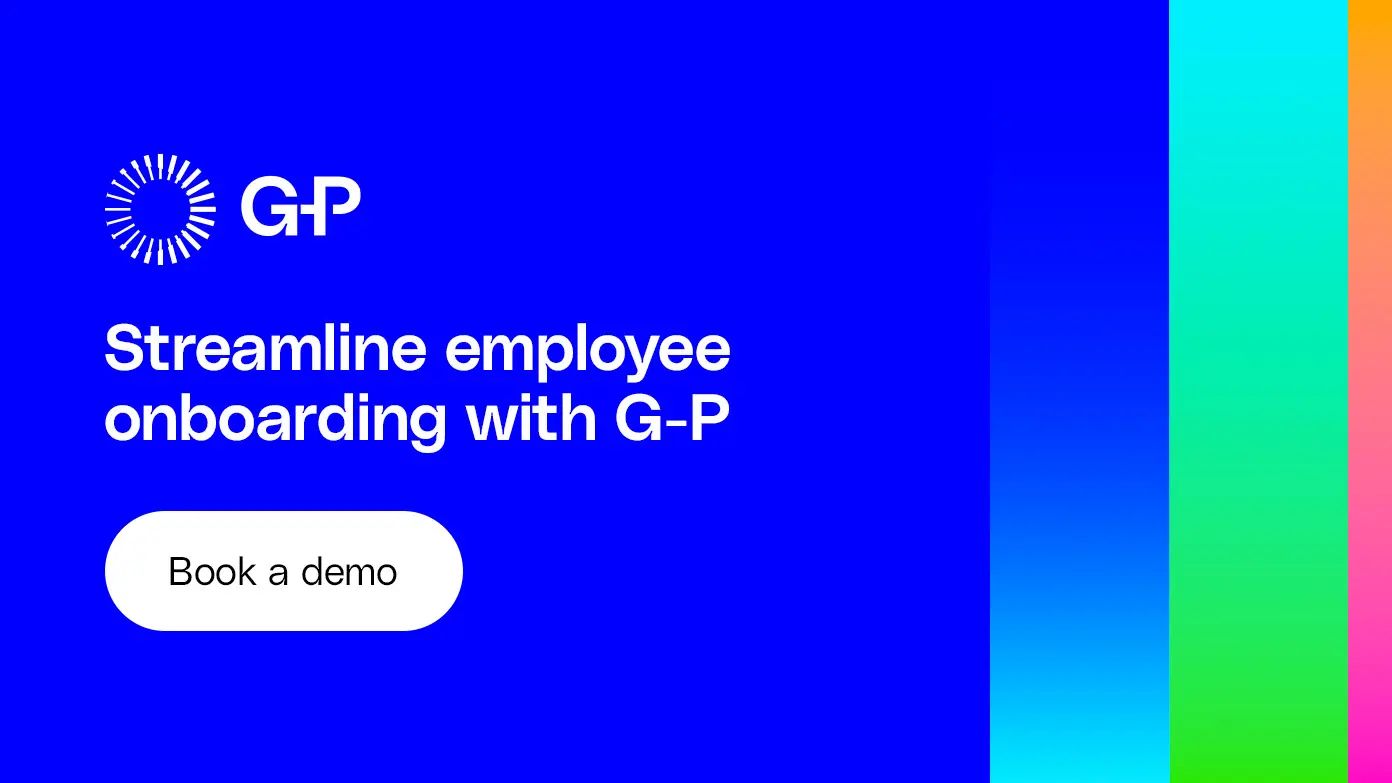Behind every hire is a human being. And humans look for connection. Connection creates a sense of belonging and impacts how your team feels and performs. But working for a global company that's based elsewhere can feel isolating for new hires. With a strong onboarding experience, it doesn’t have to be. A positive global onboarding experience helps new hires feel welcome and ready to work — regardless of geography.
A global team onboarding plan and a best-in-class employer of record (EOR) like G-P™ can help new global hires feel connected from day one.
What are the benefits of an effective international onboarding process?
Onboarding, also known as organizational socialization, is an HR term used to describe the process of integrating a newly hired employee into an organization. Onboarding familiarizes new hires with all the elements of their new role and employer to set them up for success.
Let’s explore five benefits of effective onboarding:
-
Better productivity: A SHRM study found that new hires are 50% more productive when they successfully complete a standardized onboarding. Efficient onboarding can help new hires learn quickly so they can start contributing to your organization faster.
-
Strengthened company culture: As you expand your business globally, company culture is key to employee retention. The most successful companies go out of their way to integrate brand core values and principles into the onboarding experience.
-
Reduced employee turnover: According to Harvard Business Review, new employee turnover rates can be as high as 20% within the first 45 days. Structured training can help new hires feel more connected to their role and your company.
-
Decreased training costs: You can reduce the time and costs associated with learning and development by providing new employees with key tools and resources during their first week on the job.
-
Improved employee satisfaction and engagement: A seamless onboarding experience can help new hires feel more engaged with their work, team, and your company culture. Engaged employees tend to be more productive and have stronger job performance overall.
Top 4 elements of a successful global onboarding process
Building an efficient global onboarding process takes planning. You'll need to keep it consistent while also customizing certain aspects for each country you hire in. Keep the following in mind:
-
Local adaptation: Use the local language in onboarding materials if English isn't a requirement for the job. Adjust your approach to match how people communicate, work, and live in each country.
-
Compliance and legal needs: Every country has different employment laws. Tax rules, data privacy, and holiday time vary from one location to another. Work with compliance experts who understand local rules to create an onboarding process that meets legal requirements.
-
Role-specific training: Create learning plans for each job and location that include a mix of company-wide training and job-specific skills. Training should be easy to access and follow, with simple language and video examples.
-
Technology and tools: Use online platforms that have multiple languages and learning options. Make sure everyone can access the platform from day one. Be sure to provide training on the platform before assigning learning tasks.
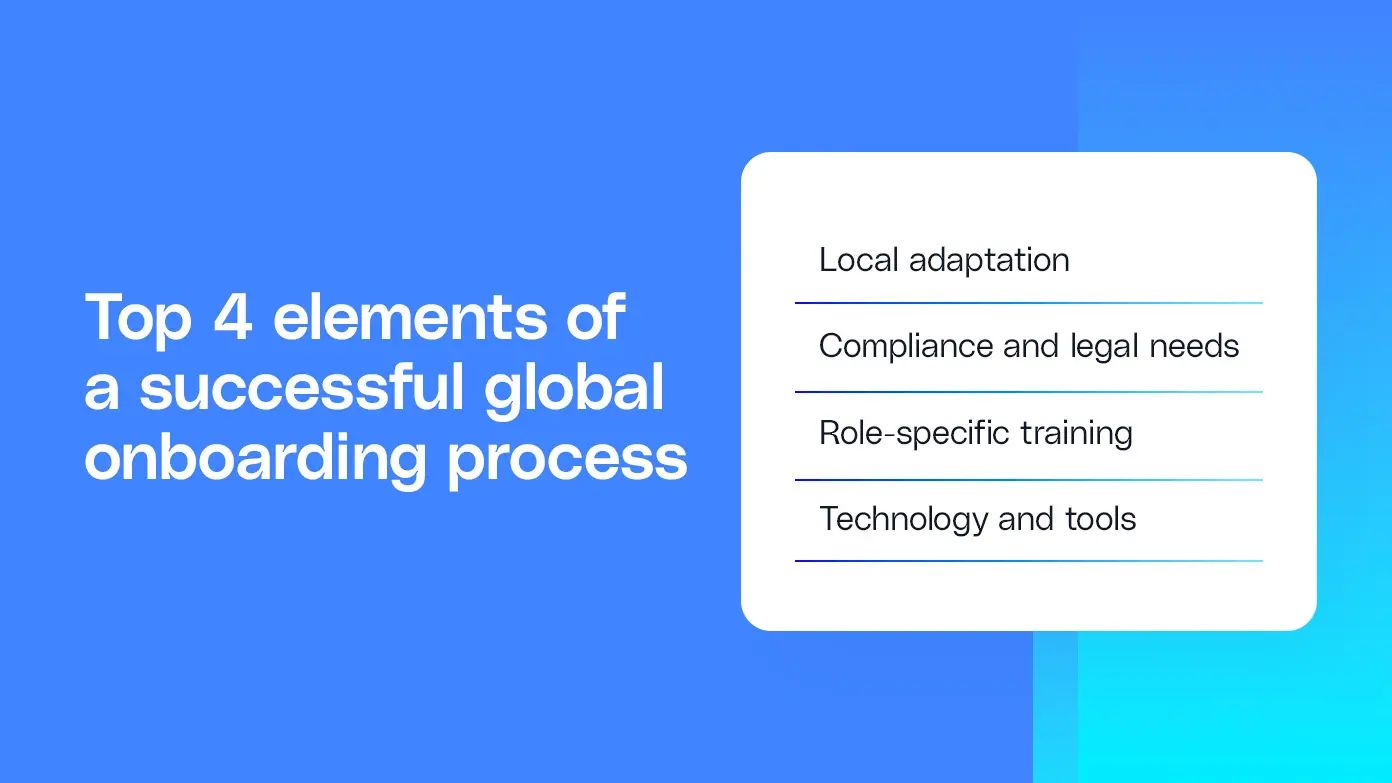
Essential documents for onboarding international employees
Documentation is an important part of global onboarding. Missing or incorrect paperwork can delay start dates, create compliance issues, and frustrate new hires. Prepare the necessary documents before your global team members' first day:
-
Legal and compliance documents: These include employment contracts, country-specific tax forms, data privacy agreements, and required insurance enrollment forms.
-
Company-specific documents: You'll need an employee handbook, a company policy adapted for local laws, organizational charts for global reporting structures, a code of conduct with cultural considerations, and intellectual property agreements.
-
Role-specific information: Provide clear job descriptions, appropriate training schedules, team contact lists, and project plans with deadlines.
-
Payroll and banking information: Include information about when people get paid, expense rules, tax forms, and how to sign up for benefits.
-
Preboarding documents: These may include a welcome packet about your company culture, a list of equipment, a first-week schedule, and who to call for emergencies.
G-P Gia™, our AI-powered global HR agent, can help you complete global onboarding tasks in minutes. Through advanced, multistep AI reasoning, Gia thinks like a lawyer and gives you context-specific guidance across 50 countries and all 50 U.S. states. Use Gia to review, analyze, and generate HR documents like employment contracts, employee handbooks, benefits enrollment forms, and onboarding checklists to ensure a successful integration of new hires.
Onboarding new hires checklist: 9 steps to effective integration
According to the 2025 Global Workforce Trends , onboarding new staff is one of the top three challenges for companies in industries like manufacturing. With a well-supported EOR solution and advanced HR tools like Gia , it doesn’t have to be.
|
9 steps to onboarding effectiveness |
|
1. Give new hires early system access. |
|
2. Build a 90-day onboarding plan. |
|
3. Assign a mentor or a buddy. |
|
4. Clarify employee benefits. |
|
5. Provide technology resources from day one. |
|
6. Try group onboarding. |
|
7. Conduct regular check-ins. |
|
8. Streamline human resources documentation with an EOR. |
|
9. Offer 24/7 support. |
Let’s explore how a structured onboarding process and best-in-class HR tech can help new hires feel connected.
1. Give new hires early system access
Give new hires access to all onboarding paperwork and resources before their start date. Usually considered part of the “preboarding phase,” be sure to deliver all equipment and tools to the employee.
Don’t forget to set up your new hire’s email and company accounts so your HR team can provide login details on their first day.
2. Build a 90-day onboarding plan
An onboarding plan is key for effective goal setting. All employees need a basic understanding of their day-to-day roles and responsibilities. Be sure to set performance expectations, including monthly, quarterly, and annual goals.
Use this onboarding plan as a springboard to outline goals and potential targets. A strong roadmap includes:
-
Week 1: Orientation and initial training
-
Week 2: Job-specific training and mentorship meetings
-
Weeks 3-4: Course certifications, training with subject matter experts, and individual or team goal setting
-
Weeks 5-8: Regular check-ins with managers, ongoing company-wide training with cohorts, and performance feedback discussions
-
Weeks 9-12: Introduction to long-term team projects and ongoing career development plans for the year ahead
3. Assign a mentor or buddy
Your new hire won't know anyone except the people who interviewed them. Pair your new professionals with a mentor or buddy who can offer support and guidance from the start. A seasoned employee can help the new hire navigate their new role, work culture, and organization.
4. Clarify employee benefits
Competitive, up-to-date benefits help attract top talent. In fact, 82% of employees say that having a better understanding of their benefits would give them a greater sense of stability.
Partner with a best-in-class EOR solution to easily administer locally compliant benefits plans for your global teams. You can also use Gia to research statutory and market-standard benefits in different countries, so your offerings remain competitive and compliant. Gia can review your current benefits policies (such as health insurance, retirement plans, paid time off, and wellness programs) to ensure they comply with local and international employment laws.
5. Provide technology resources on day one
The compliance portion of your onboarding process should include IT security policies and practices. Share guidelines on software and hardware usage for all employee onboarding programs, including:
-
Password management
-
Data back-ups
-
Data sharing or access-only boundaries
-
Mobile device usage
-
Wireless network usage
-
Two-factor authentication
6. Try group onboarding
Onboarding several hires at the same time can help build community. Our bulk onboarding feature frees up your HR teams and creates a straightforward path for new hires.
7. Conduct regular check-ins
Weekly or daily check-ins are an essential part of a successful employee onboarding process. Build a structured check-in document that outlines goals and where they stand with individual development planning. Don’t forget to ask for regular feedback and create space for employees to give their input.
8. Streamline HR documentation
HR documentation is a key element of the employee orientation part of onboarding. G-P technology and self-guided workflows simplify and streamline onboarding. With features like our Employment Contract Generator , you can create legally compliant contracts in just a few clicks and present them to candidates for faster and simpler onboarding.
9. Offer 24/7 support
Offer in-region HR support and access to a reliable help center. Our dedicated, in-region HR specialists provide local support to new hires in their time zone and language. Human support is complimented with our in-platform agentic AI, G-P Assist. New hires get instant answers to questions at any time.


